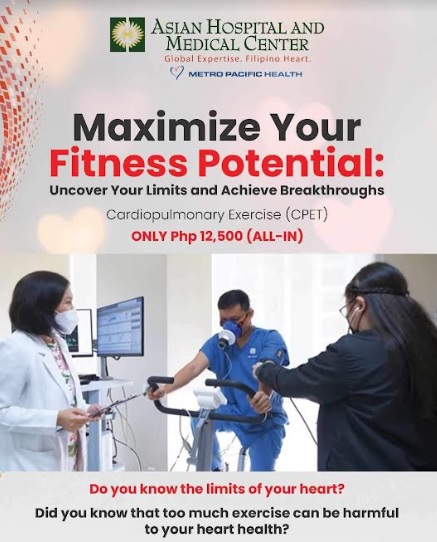They say never give up. But do you know how far you can go?
Dreaming is limitless but when it comes to health, it's necessary for us to know how far we can go
I’d often see people posting this meme on social media: “mapapagod pero hindi susuko” (Will get tired, but will never give up). Such reflects the resilience and ever-positive attitude of Filipinos. Not giving up easily comes really handy in this uncertain world.
And while I agree that we should never surrender, I’d complete this thought with “okay lang mapagod basta matutong magpahinga at patuloy na magpalakas.” Yes, resilience and hard work are constants in life, but I’d always remind my patients that we must also realize that our physical selves have boundaries – overstressing our bodies can be harmful to our health. And this is especially important for those with a really active lifestyle like professional and recreational athletes, as well as those who are beginning an exercise program.
Dreaming is limitless but when it comes to health, it’s necessary for us to know how far we can go. Awareness of how capable our bodies (e.g. heart, lungs, physical strength) are in getting stressed (i.e. during exercise) is important to have an idea where we stand. Knowing where we are can help set better direction on how far we can go (and carry) literally!
Are we overstraining our hearts? Masyado na ba itong pagod? (Is it working too hard) How easily do our hearts and lungs really recover from exhaustion? How can we improve our cardio-pulmonary health in order to increase our limits and be more capable in achieving our dreams? These questions can be better answered if we undergo a Cardiopulmonary Exercise Testing (CPET).

CPET uncovers the intricate relationship between the heart, lungs, and physical capacity. It evaluates your fitness level by measuring your exercise capacity – are there any limitations or impairments affecting your ability to perform physical activities? The test can also help check for any abnormalities in heart and lung functions that can only be discovered when active, which can help in early detection of subtle anomalies for management before escalation. But the test goes beyond diagnosis, the evaluation also allows physiologists to tailor an exercise plan that considers type, intensity, and duration based on individual needs and abilities.
A team of healthcare professionals – a cardiologist, pulmonologist, and exercise physiologist – will work together in conducting the test in a hospital or clinical setting. It usually takes 30 to 60 minutes to complete the test. The team will explain the procedure and expectations before conducting the test. Your blood pressure, heart rate, and oxygen will be checked. You will be asked to wear a face mask or mouthpiece connected to a machine measuring your oxygen and carbon dioxide levels. To monitor your heart rate, a wire connected to a monitor/machine will be placed on top of your chest.
To prepare your body for exercise, warming up starts on a stationary bike or treadmill for a few minutes. After the warm up, you will continue exercising on the bike or treadmill while your oxygen uptake, carbon dioxide production, heart rate and other physiological parameters are monitored.
Expect the exercise to intensify until you reach your maximum effort or if symptoms such as chest pain or shortness of breath occur. You don’t have to worry about any of these symptoms, as these are natural effects of stress and our reference in gauging your capacity (besides, you’re surrounded by a team of medical professionals). Once the exercise has been completed, you will be asked to rest and cool down for a few minutes. Your heart rate and other physiological parameters will continue to be monitored.
The data collected during the test include your aerobic capacity, which is the maximum amount of oxygen a person can use during strenuous exercise; anaerobic threshold, which is the highest exercise intensity that a person can sustain for a long period of time with sufficient oxygen delivery; and other physiological parameters. The results will be used in helping you set realistic goals.
We doctors understand every person’s yearning to expand horizons, challenge one’s limits, and not give up. But with understanding and real data of our capabilities, we will be able to set realistic goals and succeed. Pag napagod, pwedeng magpahinga. Alamin ang kakayanan at kakayanin pa (We're allowed to take a break when we get tired. Be aware of our limitations and the limits of what we can handle).
Learn more about the All-in CPET Package of Asian Hospital and Medical Center here. Read more about Cardiovascular health and the Asian Cardiovascular Institute here.